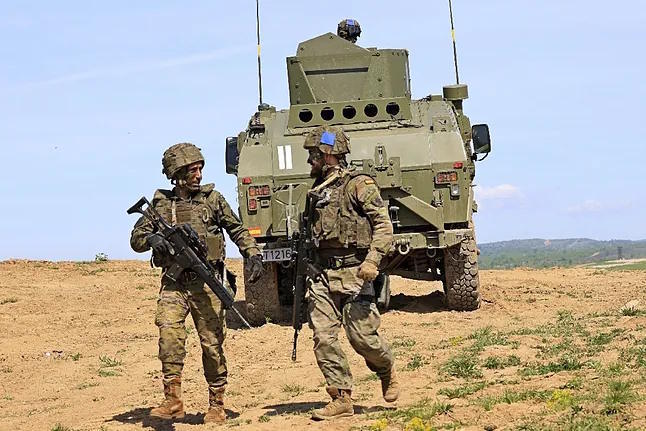"Spain's defense spending has historically been characterized by chronic insufficiency." This is the first of the conclusions reached in the study The increase in Spanish defense spending, conducted by Carlos Calvo, Antonio Fonfría, and Carlos Martí Sempere for the Alternativas Foundation. It is an exhaustive work that exposes, under that premise, the current problems facing Spanish Defense, from the Armed Forces to the industry, and proposes recommendations to solve them.
The analysis, which speaks of the aforementioned "chronic insufficiency" of defense spending in Spain, explains that in absolute terms, it has reached just over 15,000 million at its peak, much less than the effort now demanded by NATO. After agreeing that allied countries will invest 5% of GDP in Defense over ten years, Spain has committed to reaching the agreed capabilities by spending 2.1%, a percentage doubted by NATO's Secretary-General, Mark Rutte, who stated he is "completely sure" that 3.5% will be needed.
Faced with these divergent opinions between the Government and the Atlantic Alliance, the analysis presents three possible spending scenarios by 2028, a date by which the authors can calculate with some certainty how the increase will evolve, and for which they detail the millions to be invested, significantly more than the 10,471 promised by Pedro Sánchez in the Industrial and Technological Plan approved last April.
In the first scenario, considering that NATO currently certifies an investment of 1.28% of Defense spending, they estimate that in three years, spending would reach 2.7%, translating into 50,000 million in 2029.
Conversely, if the investment were to stagnate at 2.1%, "it would mean spending around 38,000 million euros in the last of the years." The third hypothesis would be for Spain to increase spending to the 3.5% demanded by NATO, which would mean spending around 65,000 million euros in 2029.
Beyond spending scenarios, the report identifies a personnel shortage similar to what the Armed Forces have already calculated. In fact, they note that the 116,410 soldiers in January 2024 represent "the lowest number since 2007."
Currently, "the overall deficit of personnel in active service in the Armed Forces would be in a range between 14,590 and 24,590 personnel." Defense plans estimate an increase of 7,500 soldiers by 2030. The President of the Government stated in the extraordinary session of the Congress of Deputies last week that they will increase by 14,000, but the number, which is not yet approved, remains insufficient.
The study also analyzes the Defense industry sector, which is intended to be strengthened with the rearmament plan. Although according to data from the Stockholm International Peace Research Institute (SIPRI), Spain is ranked ninth globally and fourth within NATO, the authors argue that in 2023, for the first time, more was imported than exported. A phenomenon that the study identifies several problems with. To begin with, "there is an excessive dependence on the aeronautical sector as a result of cooperation programs promoted by the Ministry of Defense." This, they explain, has led to a significant volume of operations with France and Germany, but bilateral relationships have not been promoted with countries that have highly competitive defense sectors. Outside the NATO+EU market, they highlight the relationship with Saudi Arabia, affected by political reasons, and with Turkey.
At the latest defense fair, an agreement was signed between Airbus and Türkiye to import their training aircraft, the Hurjet. Additionally, the Navy has shown interest in Turkish fighters to replace the Harriers as a new option instead of the F-35s assembled by Lockheed Martin. During the study presentation, the authors also noted a lack of coordination among Spanish factories, making them less competitive.
